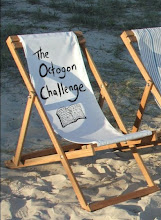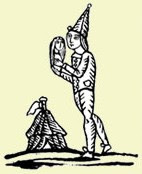 It has taken me a year to complete this book in stages and after last months Irony and Revulsion in Kipling and Conrad and Waiting: James's Last Novels I am covering the last 2 chapters here today.
It has taken me a year to complete this book in stages and after last months Irony and Revulsion in Kipling and Conrad and Waiting: James's Last Novels I am covering the last 2 chapters here today.Chapter 18 - Wyndham Lewis
Wyndham Lewis has been thought of by some as the 'most Modernist of Modernists' (p277), innovative, fascinated by negativity, using wide subject matter. Particularly interested in characters who were apart from others he often used the adjective 'acrid' to describe them and made it his own. Descriptions of these revolting personalities incorporated physical details similar to Conrad and his fat men. Their shapelessness is revolting. He includes a character who exposes himself to a woman, an act that is not driven by sexuality or violence, but instantly abhorrent in a nauseating manner.
In Enemy of the Stars Lewis explores distasteful relationships by presenting us with two male friends who continually antagonise each other. This antagonism is what bonds them together. Samuel Beckett drew our attention to 'pseudo-couples' and their use in literature (a device Beckett used in many of his plays) and Lewis' male characters fulfill this description. Their disgust with themselves and each other leads to physical violence. Their fury leads to a distasteful conclusion where one of them is stabbed. Lewis also uses laughter to illustrate revolting characteristics in his novels.
Dickens was also interested in negative characters and uses of description, but he used them as the antithesis of goodness and righteousness. Lewis was interested in negative characteristics for themselves. He thought that disgust or amusement were the only elements to make a character count.
In the novel Tarr he uses mysogeny, with many distasteful rants against women imparted by the characters. Women are opposite to men, more fluid and indeterminate, more messy according to Lewis' characters. Modernism did not invent degenerate characters (see Shakespeare's plays or Rembrandt's paintings) but it certainly took them to another level. Lewis' novels went beyond James, Conrad and Kipling. Complex irony involved a comedy element that had not been explored to this extent before. Modernist artists and writers had demanded effort from the public to appreciate their art form. Writers and artists in the post-modern era became even more candid in their treatment of desire and disgust.
Chapter 19 - Stephen Hero and Bloom the Obscure
David Trotter suggests that the two motives behind Modernism were to appeal to a more varied market for fiction by increasing effort in the reader in return for more intense experience, and a need for a new set of subjects and experiences with the back drop of economic, social or political change. The novel said to represent all of this is A Portrait of the Artist as a Young Man by James Joyce. Exploring character development it incorporates desire and disgust. Trotter compares other works by Joyce as to their innovation and Modernist traits to illustrate the development of Modernist ideas.
Contemporary works that illustrate the above points include...
By Wyndham Lewis -
Enemy of the Stars
The Wild Body
Tarr
By James Joyce -
A Portrait of the Artist as a Young Man
Ulysses
In conclusion
Far from being a chore, this book has been a pleasure to read, very thorough, exploring themes in detail without becoming bogged down in remes of examples. It did not matter that I had not read all of the books mentioned but I do think some background reading is necessary to get a base to start with. There were plenty of surprises and lots to learn along the way, and structuring this into notes each month has helped the information to bed in more successfully. I would consider doing something similar with another book from this range in the future (I already have my eye on a title) and I am glad that a previously dormant book on my shelf has been put to good use. I am really glad that I read this book and completed my own challenge to do so all those months ago when I found it on my shelf.
























No comments:
Post a Comment